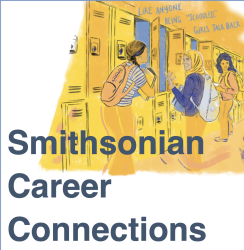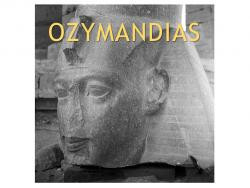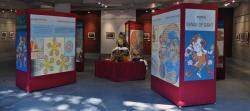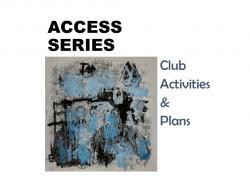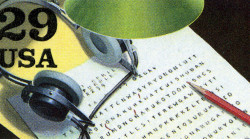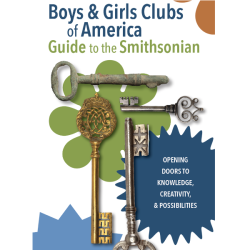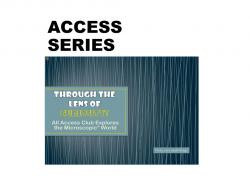Tracie Spinale
Learning Programs Manager
Smithsonian Institution
Middle School (13 to 15 years old), High School (16 to 18 years old), Post-Secondary
Teacher/Educator, Curriculum Coordinator, Parent, Museum Staff
Language Arts And English, Science, Social Studies, Arts, Special Education, Career and Tech Ed, Other
: Museum Studies
Hi there! I am the Learning Programs Manager at the Office of the Under Secretary for Education (OUSE) where I focus on positive youth development programs.
Enjoy!
- Positive Youth Development
- 4-H & 4-H Guide to the Smithsonian booklet
- Boys & Girls Clubs of America
- All Access Digital Arts Program - Collections for teens and youth with cognitive differences
- Distance Learning Resources
- A cultural science series from the Smithsonian Arctic Studies Center in Alaska (#arcticstudies)
- Maker and activity collections about environmental and social justice issues
- Topical collections
- A series on the intersection of Buddhism and Western Science
Tracie Spinale's collections
"Think Different": Steve Jobs
<p>What does it mean to be influenced by the world around you? This collection looks at the technical innovations, design influences (Japanese Zen Buddhist, Italian, Bauhaus); location influences (Yosemite, Silicon Valley); and cultural and musical influences (Bob Dylan, Edwin Land) which inspired Steve Jobs to "think different" and create digital products which changed the world.<br></p><p>Today, owning an iPhone is almost ubiquitous--seamlessly integrated into our modern lives. I'm typing on a MacBook Pro as I write this metadata note. But, I'll always remember the feeling of excitement as a kid--my first personal computer, an Apple //c. (1984). I spent hours, upon hours on it, exploring a strange and wonderful new world; and years later, a Macintosh followed, that took me to college. I remember wearing earbuds for the first time, and listening to my personal music collection on my first iPod Gen 4 (2004). Besides being a seminal technology influence in my life, I was inspired to create this collection about Steve Jobs after creating a family day program at the Smithsonian based on the <em><a href="https://www.si.edu/Exhibitions/The-Patents-and-Trademarks-of-Steve-Jobs-Art-and-Technology-that-Changed-the-World-4838" target="_blank">Patents and Trademarks of Steve Job</a></em> traveling exhibition (2012). I hope the story of Jobs and Apple inspires the next generation to think different and change the world through technology.</p>
<p>Keywords: inventor, biography, technology, innovation</p>
 Tracie Spinale
Tracie Spinale
42
"The World of Your Senses": Parallel Perspectives from Tibetan Buddhism and Western Science on Sensory Perception
<p>"The World of Your Senses" shares parallel perspectives from Tibetan Buddhism and western science on sensory perception. This collection explores the questions: How do we see? How does hearing work? How do we perceive smell? How does taste function? How do we sense touch? In addition, the Buddhist perspective includes a sixth sense... mind consciousness!</p>
<p>"The World of Your Senses" is the result of many years of work growing out of directives from His Holiness the Dalai Lama and his long history engaging Western scientists in dialogue. The script, content, and imagery were envisioned by a dedicated and curiosity-filled group of thirty Tibetan Buddhist monastics-in-exile from monasteries and nunneries in India, through the "Science for Monks and Nuns" program. The creation of the physical exhibit, launched in 2010, was supported through a unique collaboration between the Library of Tibetan Works and Archives (LWTA in Dharamsala, India), the Sager Family Foundation, the Smithsonian Institution in Washington, D.C. (SCEMS/SCLDA/OET & OEC/Smithsonian Exhibitions), and the Exploratorium in San Francisco. It has since traveled to the United States, Nepal, and Bhutan.</p>
<p>The resource is bi-lingual: English and Tibetan.</p>
<p>RELATED COLLECTIONS:</p>
<p>Senses Series – <strong><a href="http://learninglab.si.edu/q/ll-c/n2f39XxkfBRJeHPk" target="_blank">Sight in Humans and Animals</a></strong> (<a href="http://learninglab.si.edu/q/ll-c/n2f39XxkfBRJeHPk">http://learninglab.si.edu/q/ll-c/n2f39XxkfBRJeHPk</a>)<br><br>Senses Series – <strong><a href="http://learninglab.si.edu/q/ll-c/7EbVTM49NgWiGrzA" target="_blank">Hearing</a></strong> (<a href="http://learninglab.si.edu/q/ll-c/7EbVTM49NgWiGrzA">http://learninglab.si.edu/q/ll-c/7EbVTM49NgWiGrzA</a>)<br><br>Senses Series – <strong><a href="http://learninglab.si.edu/q/ll-c/7LjjBHybUk9HE8Wj" target="_blank">Smell</a> </strong>(<a href="http://learninglab.si.edu/q/ll-c/7LjjBHybUk9HE8Wj">http://learninglab.si.edu/q/ll-c/7LjjBHybUk9HE8Wj</a>)<br><br>Senses Series – <strong><a href="http://learninglab.si.edu/q/ll-c/2w7r7PVoAgghiYmL" target="_blank">Taste</a> </strong> (<a href="http://learninglab.si.edu/q/ll-c/2w7r7PVoAgghiYmL" style="background-color:rgb(63,63,63);">http://learninglab.si.edu/q/ll-c/2w7r7PVoAgghiYmL</a>)<br><br>Senses Series – <strong><a href="http://learninglab.si.edu/q/ll-c/oon5rHojeyrEwNEE" target="_blank">Touch</a> </strong>(<a href="http://learninglab.si.edu/q/ll-c/oon5rHojeyrEwNEE" style="background-color:rgb(63,63,63);">http://learninglab.si.edu/q/ll-c/oon5rHojeyrEwNEE</a>)</p>
<p><br>This collection is based Science For Monks, <a href="http://scienceformonks.org/world-of-your-senses-web-tour/" target="_blank">World of Your Senses</a> (2010).</p>
 Tracie Spinale
Tracie Spinale
28
Species Conservation & Challenging Perceptions of Zoos
<p>Use the worksheet, videos, images, and informational texts for the activity "Challenging Perceptions of Zoos," to discuss how zoological and conservation parks carry out their mission to save species. Through the lens of the Western Lowland gorilla, Cuban crocodile, Sloth bear, California sea lion, and the Asian elephant--consider how these animals--endangered in their natural habitats through climate change, human conflicts, or hunting--are being conserved, or saved from extinction through the work of scientists and staff in zoos and conservation parks. <br></p>
<hr>
<p>KEYWORDS: student engagement, teen council, conservation biology, Earth Optimism, #earthoptimism, animals, zoos, zoo, zoological</p>
 Tracie Spinale
Tracie Spinale
55
Senses Series - Taste
<p>How do we taste what we taste? This collection is about the kinds of tastes that the human tongue experiences. Background information from the website Neuroscience for Kids provides an overview of how the tongue and taste function. Included are experiments to try, as well as examples of the kinds of tastes: sweet, salty, sour, hot and bitter. The collection closes with a cross-cultural examination of tongue function and tastes from Tibetan monastics—who recognize thirty-six different tastes!<br /><br />Based on exhibition project work through <a href="http://scienceformonks.org/">Science for Monks</a> and <a href="http://scienceformonks.org/world-of-your-senses-web-tour/" target="_blank">The World of Your Senses</a> Exhibition (2010).</p>
 Tracie Spinale
Tracie Spinale
14
Senses Series - Smell
<p>How do we experience the sense of smell? This collection explores the variety of human and animal smell experiences. Videos examine ants that use smell to communicate, orchid bee perfumery, and the unique smell adaptation of the maned wolf. Background information from the website Neuroscience for Kids provides the structure and function of the nose, as well as olfaction experiments. The collection concludes with a cross-cultural examination of touch from a Tibetan monastic Buddhist perspective. How might their experience of smell differ from your own?<br /><br />Based on exhibition project work through <a href="http://scienceformonks.org/">Science for Monks</a> and <a href="http://scienceformonks.org/world-of-your-senses-web-tour/" target="_blank">The World of Your Senses</a> Exhibition (2010).</p>
 Tracie Spinale
Tracie Spinale
9
Senses Series - Sight in Humans and Animals
<p>How do we see what we see? This collection is about seeing the world in unexpected ways through human innovations and animal adaptations. Meet a teen who invented a new way to see infrared, a visually impaired woman with a bionic implant, a shark whose eye is similar our own, a Giant Squid with the world's largest eyes, a mantis shrimp who sees many colors in all directions, and a nocturnal sweat bee who navigates the jungle in the dark. Learn about why human vision can only see a certain type of light within the electromagnetic spectrum. Background information from the website Neuroscience for Kids provides an overview of how the eye and brain function together, and experiments to try. The collection concludes with a cross-cultural examination of seeing from a Tibetan monastic Buddhist perspective. How might their experience of sight differ from your own? <br /><br />Based on exhibition project work through <a href="http://scienceformonks.org/">Science for Monks</a> and <a href="http://scienceformonks.org/world-of-your-senses-web-tour/" target="_blank">The World of Your Senses</a> Exhibition (2010).</p>
 Tracie Spinale
Tracie Spinale
15
Museums, Activism, and Social Justice
<p><br>How can museum exhibitions engage with teens to foster dialogue surrounding challenging questions about social justice? This learning resource contains an in-gallery activity related to the <em><a href="http://nmai.si.edu/nationtonation/" target="_blank">Nation to Nation: Treaties Between the United States and American Indian Nations</a></em> exhibition--that has been adapted for online use. The activity examines the important relationship between the United States Government and tribal Nations. It examines the 1851 Horse Creek Treaty and links to present-day activism by the people of the Standing Rock Sioux tribe and their supporters.<br></p><p>Teens are encouraged to discuss: <em>When people ask you where you are from, what do you say? Why do you respond that way? Can you remember the first time you witnessed or experienced an injustice? Can we ask a nation to sacrifice development opportunities in the service of protecting the environment / treaty rights / tribal rights? What is your role in carrying on the maintenance of this relationship between tribes and the U.S.? How can museums respond to issues of social justice in the community? What should the Smithsonian do to share this story? How can we involve teens in sharing this story?</em></p>
<hr>
<p>KEYWORDS: student engagement, teen council, American history, DAPL, exhibition tour, inquiry-based learning, questions, Native American, Dakota, activism, manifest destiny, sovereignty</p>
 Tracie Spinale
Tracie Spinale
29
Murals
<p>Examples: videos about murals at the Smithsonian; murals about pieces in the Smithsonian collections; murals about social issues; murals through time; artists working on murals; design process of murals; celebratory murals about various kinds of labor and industries; protest murals; murals depicting an idealized version of history; example of student project/artist statements</p>
 Tracie Spinale
Tracie Spinale
113
Lesson Plans - All Access Digital Arts Club: Activities + Plans for Neurodiverse Teens
<p>The Smithsonian Office of Educational Technology's All Access Digital Arts Program (2012-2016) provided skill-building opportunities in digital arts and communications, creative expression, and social inclusion to a spectrum of teen learners in the Washington, DC metro area. Participating youth visited Smithsonian science, history, and art museums, created digital and physical artworks based upon a tailored curriculum, engaged in social interactions online and in-person, gained digital literacy skills, and developed friendships with other teens.
Through once-per-month club outreach activities and summer intensive camps and workshops, students were exposed to communication, collaborative learning, research, and problem solving. The program served up to 20 youth per session, ages 14 through 22 with cognitive and intellectual disabilities. The youth experienced skill building, leadership opportunities, and social integration through Smithsonian resources, socialization opportunities, and computer skills. Youth participated in 1.) One- and two-week multi-media digital arts workshops whose outcome was student-produced artworks, songs, and movies that were shared with family and friends at openings and online via a social network; and 2.) Club activities--to build upon skills developed during the summer, and maintain social connections. </p>
<p>All Access Club activities were offered to alumni of the summer workshops, and were held once monthly on Saturdays during the year to build upon skills developed during the workshop, and maintain social connections. During the club, teens practiced social skills through guided activities and Smithsonian museum visits, and produced original digital and hands-on art projects at the Hirshhorn ARTLAB+. Educators led the group in a series of planned educational activities related to the day’s theme—such as “the universe” or “oceans”. Volunteers assisted club members to use social media, tablets, cameras and laptops to facilitate the digital experience. The activities and resources promoted digital literacy skills, and can motivate families to visit museums to learn, and for teens to build self-esteem. An evaluation session on the final day allowed teens to express their thoughts to the club organizers.</p>
<p>Special thanks to colleague Joshua P. Taylor, M.Ed., VCU Autism Center for Excellence, Virginia Commonwealth University</p>
<p>Keywords: access, disability, accessibility, neurodiversity, special education, SPED, out of school learning, informal learning, cognitive, social skills, engagement, passion, creativity, empowerment, self-determination, teens in museums, teens, teenagers, after school, out of school learning, informal learning<br></p>
 Tracie Spinale
Tracie Spinale
19
Color Series: Pink
<p>This topical collection of the color pink is part of a color series and was originally used in a collage art activity (printed out; using paper, glue, and art materials) with a group of teens with cognitive disabilities during a summer camp program. </p>
<p>Tags: color series, decision-making, self-determination, student empowerment, disability, All Access Digital Arts Program</p>
 Tracie Spinale
Tracie Spinale
30
Color Series - Green
<p>This topical collection of the color green is part of a color series and was originally used in a collage art activity (printed out; using paper, glue, and art materials) with a group of teens with cognitive disabilities during a summer camp program. I was inspired to create the series after a few of our students mentioned their passionate interest in specific colors, and how they thought in colors.</p>
<p>Tags: color series, decision-making, self-determination, student empowerment, disability, All Access Digital Arts Program</p>
 Tracie Spinale
Tracie Spinale
30
Color Series - Blue
<p>This topical collection of the color blue is part of a color series and was originally used in a collage art activity (printed out; using paper, glue, and art materials) with a group of teens with cognitive disabilities during a summer camp program. I was inspired to create the series after a few of our students mentioned their passionate interest in specific colors, and how they thought in colors.</p>
<p>Tags: color series, decision-making, self-determination, student empowerment, disability, All Access Digital Arts Program</p>
 Tracie Spinale
Tracie Spinale
30


